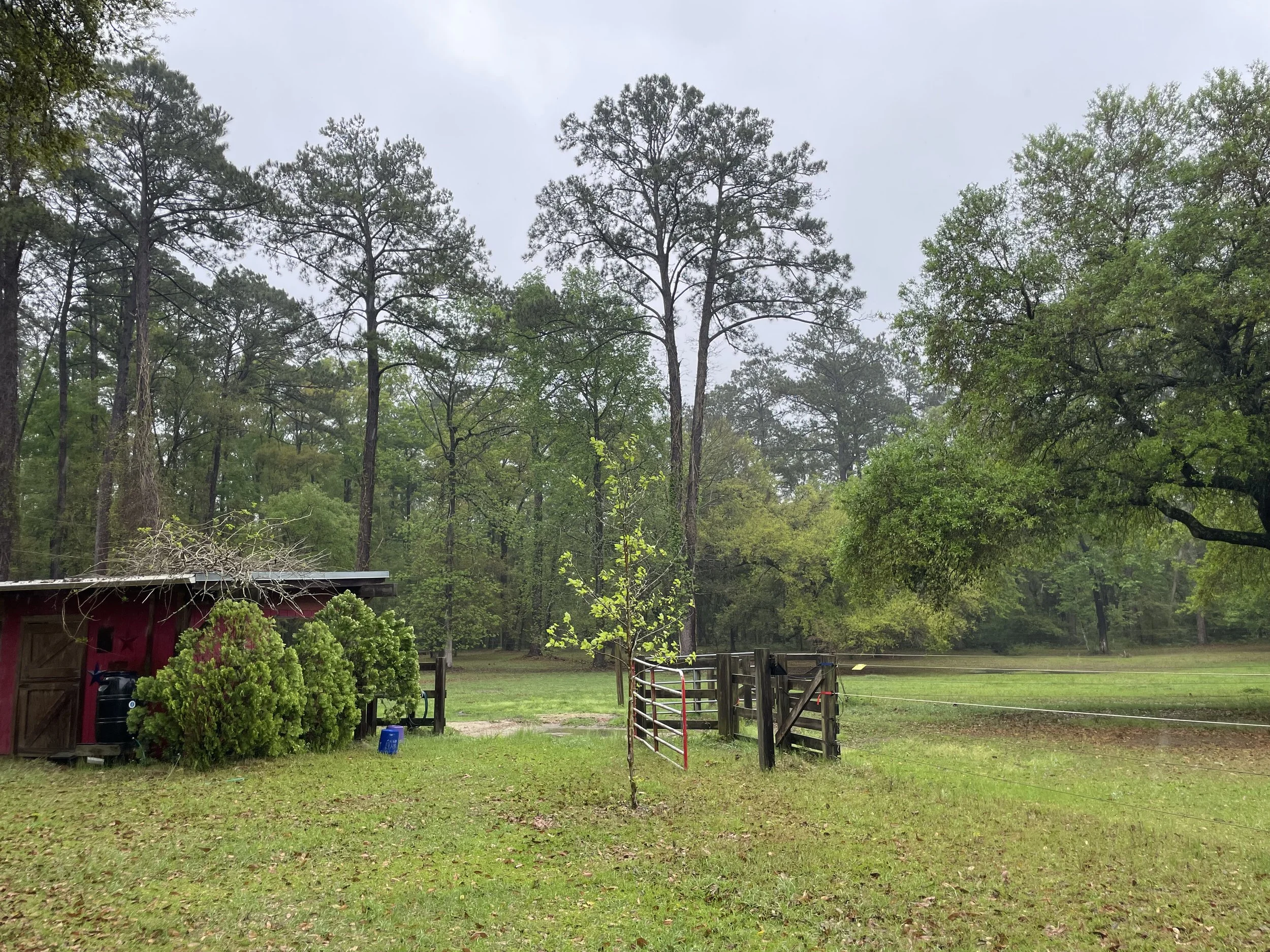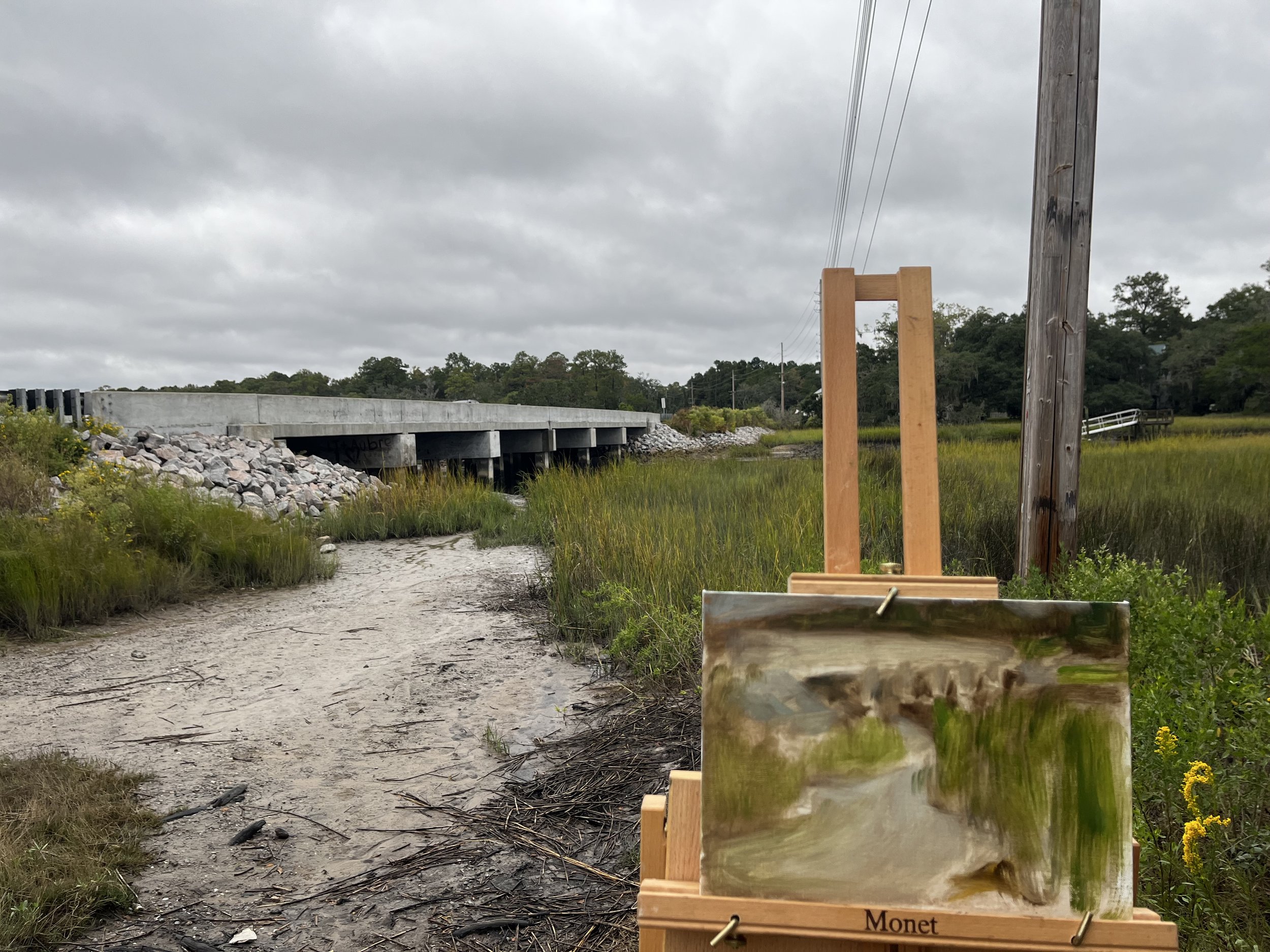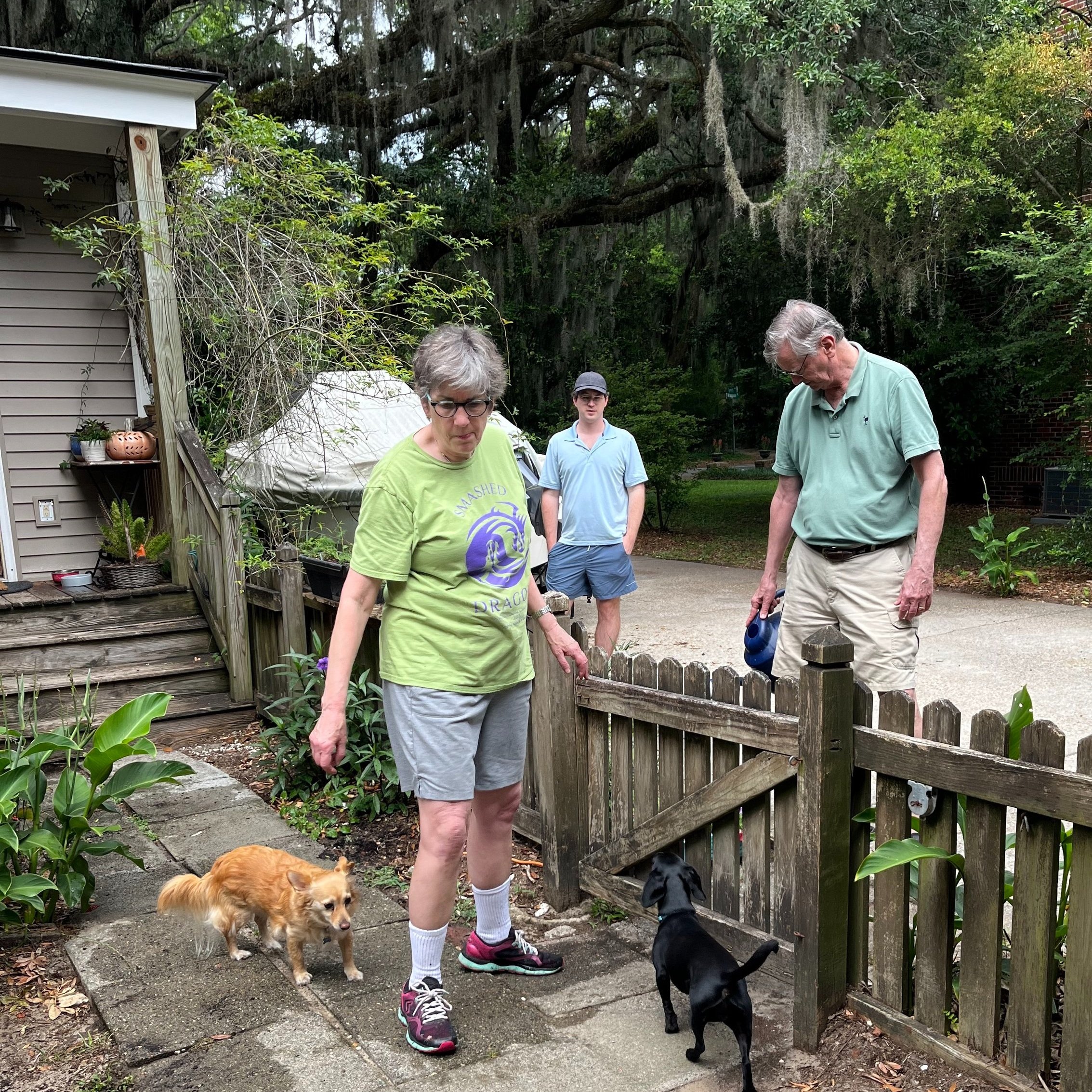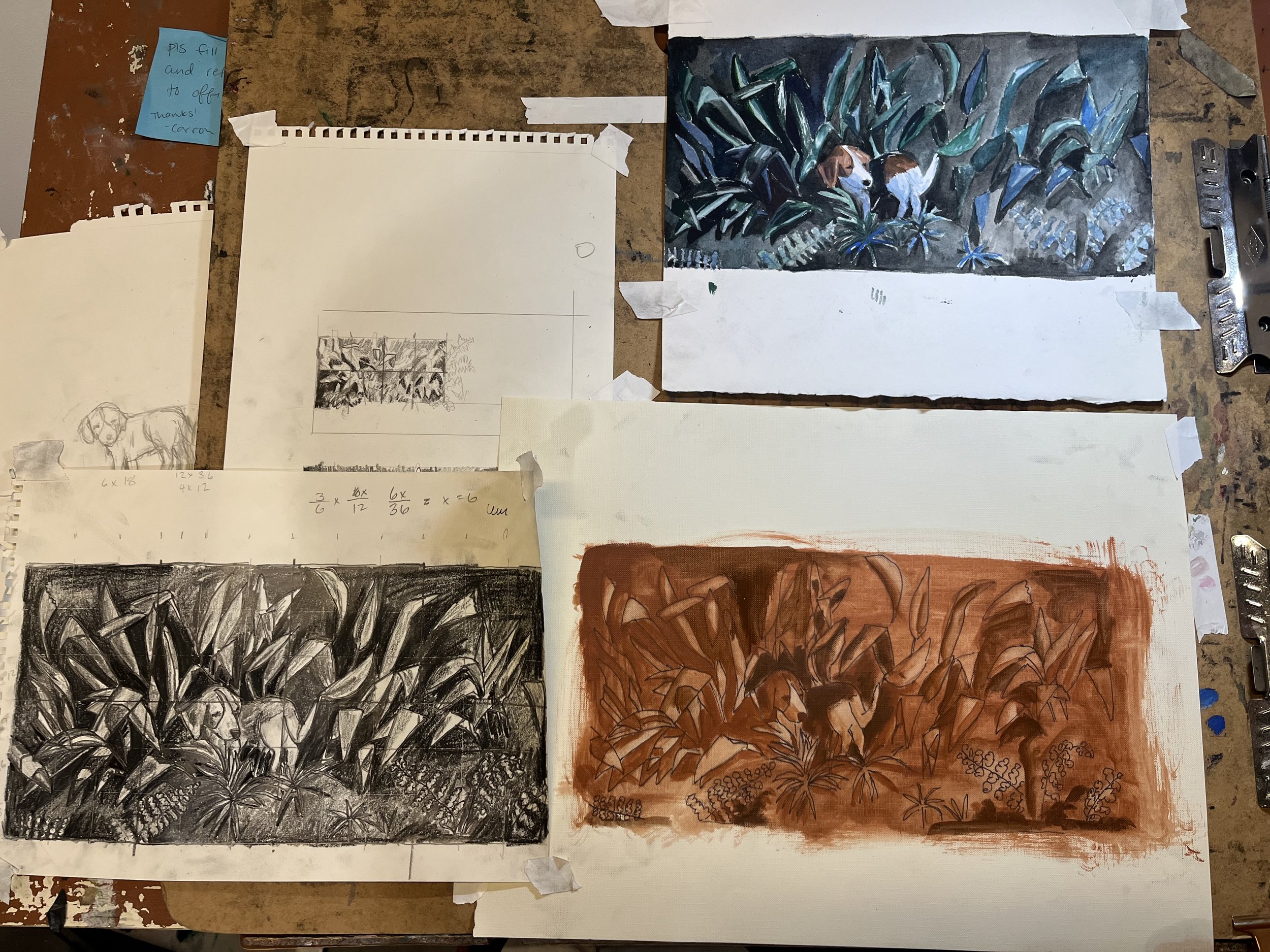Looking For Gateways
With fresh inspiration and a question in mind, I started to look for places to paint.
“There is in Celtic mythology the notion of ‘thin places’ in the universe where the visible and the invisible world come into their closest proximity. To seek such places is the vocation of the wise and the good — and for those that find them, the clearest communication between the temporal and eternal. ”
October 2023 Plein Air Paint Out, Edisto Island
With the question of “thin places” in mind, I started to look around for places that felt right in the Lowcountry.
Photographer & physical therapist Sarah Blanton describes a thin places as one where she experiences spiritual awareness, or profound stillness. I have often felt transported in places outside of Charleston— especially ones where marsh, water, pines, and oaks meet.
I have been especially drawn to places that indicate a transition within the landscape— like bridges, gates, or trees that create an archway. However, I also have been looking for transitional places like swamps, marshes, the beach; or times, like sunrise and sunset. I know “liminality” is a big buzzword in the art world and I kind of cringe using it, but it’s relevant.
Photo by Becca Hopkins, James Island SC
Some of these scenes are empty of people and animals, while others feature people and creatures that I love.
While searching for thin places in the landscape, I started thinking about mythologies with spirit guide traditions. One of the most famous in Western mythologies is the Charon figure of ancient Greece, whose boat ferried the souls of the dead across the rivers Acheron and Styx to Hades. There is a word for this tradition: the psychopomp or “guide of souls.”
“Psychopomps (from the Greek word ψυχοπομπός, psychopompós, literally meaning the ‘guide of souls’)[1] are creatures, spirits, angels, demons, or deities in many religions whose responsibility is to escort newly deceased souls from Earth to the afterlife.[2]
Their role is not to judge the deceased, but simply to guide them. Appearing frequently on funerary art, psychopomps have been depicted at different times and in different cultures as anthropomorphic entities, horses, deer, dogs, whip-poor-wills, ravens, crows, vultures, owls, sparrows, and cuckoos. In the case of birds, these are often seen in huge masses, waiting outside the home of the dying.
”
Abyssinia, Jerry, 20 x 40”. Oil on Panel. Work in Progress.
I began imagining Jerry as a psychopomp in these landscapes, starting with the first painting in the series, Abyssinia, Jerry. Here a dog pauses for a second as if to decide whether to continue into the dark, or whether to come back out toward whatever he’s looking at.
The viewer in this painting is fairly close to Jerry and eye-level, but others landscapes that interested me encompass more space and have more elements.
Thin Places
Ideas and inspiration started coming fast, and I found that I needed to organize my thoughts.
“There is in Celtic mythology the notion of ‘thin places’ in the universe where the visible and the invisible world come into their closest proximity. To seek such places is the vocation of the wise and the good — and for those that find them, the clearest communication between the temporal and eternal. Mountains and rivers are particularly favored as thin places marking invariably as they do, the horizontal and perpendicular frontiers. But perhaps the ultimate of these thin places in the human condition are the experiences people are likely to have as they encounter suffering, joy, and mystery.”
Usually I create a series of paintings by having a theme or interesting question in mind, and then mulling on it it while painting. I don’t have a specific direction or answer until close to the end of the series. In the case of this series, I had a lot of jumbled thoughts and ideas and questions all at once very soon after beginning the preparatory studies for Abyssinia, Jerry. I started feeling the need to organize my ideas. I was making associations & connections faster than I could paint them. I started to drop any concept, theme, phrase, image, or poem that felt related in a Google document. I created an “inspo” folder in my photos, saving work by artists I admire.
Featured prominently are works by John Hull and Nancy Friedland. Both of these artists create works that feel like a snapshot in time. Both artists create work concerned with narrative with loose brushwork. Nancy Friedland often creates nocturnes where dark surroundings emphasize a glowing, bright subject.
I found myself drawn to dark jungle scenes, reminiscent of illustrations in children’s fairytales and novels, as well as the wilder corners of the Lowcountry. There are places and spaces in this area that feel very ancient and almost magical, especially early morning, or twilight.
All of this dredged up the memory of a fever dream of an opera my grandparents had on VHS when I was a kid— L’Enfant et les Sortileges. In it, a boy mistreats his pet squirrel, and is punished by his nanny— and while he is banished in his room, his furniture and china plates come to life and start scolding him. He ends up running out into his garden where he discovers that the creatures in his yard have become human-sized and sentient. This 80s rendition is somehow both charming and terrifying at the same time.
It also was during this time that I started browsing the Poetry Foundation’s website, looking for work that reflected my mood, and spoke to my grief. I gravitated toward work that rejected platitudes and described the post-sudden loss experience with humor and starkness.
“When grief comes to you as a purple gorilla
you must count yourself lucky.
You must offer her what’s left
of your dinner, the book you were trying to finish
you must put aside
and make her a place to sit at the foot of your bed,
her eyes moving from the clock
to the television and back again.”
Featuring work by Nancy Friedland, John Hull, Jonathan Keeton, Ivan Montoya-Vazquez
All of these distinct sources— poems, images, theater— went into digital and physical mood boards. I printed some of the visual sources and posted them on boards in my studio. These discrete ideas, colors, moods, and styles started to coalesce into a question: what if there were “thin places” in the Lowcountry, where the visible and invisible worlds touch, or come close to touching? Would that make our deceased loved ones closer to us? How could we tap into that magic? Could a loved one act as a spiritual guide between worlds?
Abyssinia, Jerry
This spring brought grief, as well as surprising creative clarity.
In March, we lost a beloved dog, Jerry. He was hit by a car and killed. This experience left us reeling— he was an exuberant, joyful creature. I continue to feel his absence 4 months later.
left to right, clockwise from top left:
graphite composition sketch;
4”x8” watercolor & gouache color study;
4”x8” oil study (underpainting visible);
4”x8” value study in graphite4 and charcoal pencil.
Within weeks of his death, I started visualizing a composition, centering Jerry. It would be a nocturne, in a mix of jewel tones to contrast with the rusty red and bright white of his fur.
I remembered a photo of him sitting in our yard in front of a row of cast iron plants, and started experimenting in graphite with different compositions, using the cast iron plants as abstract geometric shapes.
I then moved on to a watercolor/gouache color study. I am more confident in watercolor than in oil, so it was easier to get my thoughts onto paper this way.
4”x8” color study of Abyssinia, Jerry. This is the finished version of the underpainting above.
I followed the watercolor with an oil color study, with a reddish-brown underpainting. This would be covered, for the most part, except in Jerry’s fur. The purpose of all of the prep work was to make sure that I was happy with the way that the composition flowed, that his anatomy “felt” right, and that the colors were harmonious.
20”x40” Abyssinia, Jerry. Work in Progress.
While I initially wanted to title the piece with a line from a Matthew Dickman poem, I decided to reference the last episode of Season 3 of M*A*S*H. I grew up watching that series with my sister, and that episode never fails to move me.
Despite, or perhaps because of my grief, creating this piece sparked many more ideas—which are quickly turning into a series.










